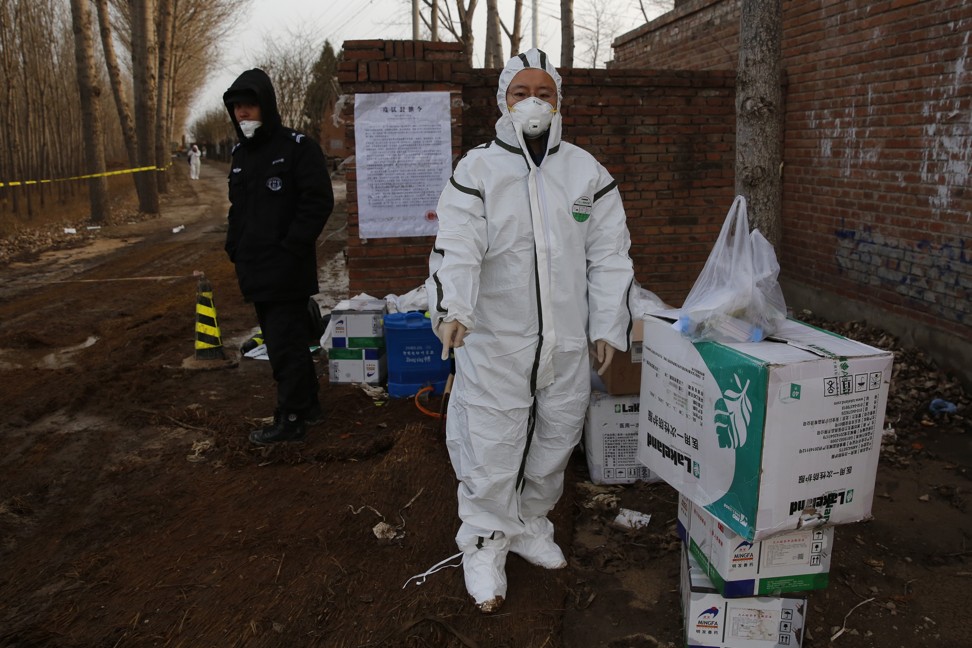
Can China learn from Russia and save its pigs from African swine fever?
- Disease-control measures are the key reason Russian pork production is on track to double by next year from 2007 levels
- In China, control of the disease is being hindered by the millions of small pig farms and trading practices that involve shipping pigs over great distances
For Chinese authorities struggling with the rapid spread of a disease that is threatening to devastate the world’s largest pig industry, Russia’s largest pork producer has the answer – get bigger and cleaner or get out.
Miratorg, which raises 3 million pigs a year, not only has strict quarantine measures at every level of its farms, but also bans workers from rearing their own hogs and from hunting wild boar. Such biosecurity measures have enabled it to thrive in the face of one of the world’s most dangerous swine diseases.
The control measures are the key reason Russian pork production is on track to double by next year from 2007 levels, when African swine fever began its march across the transcontinental nation. It is evidence that the devastating virus – which had more than 1,000 separate outbreaks in Russia and almost halved the number of small-scale piggeries – can be managed.
Now that a virtually identical strain of the contagion – which typically kills pigs within a few days, but is not known to harm humans – has spread across neighbouring China, veterinary authorities are finding farms there may need to follow the same path as Miratorg.
“When the virus appeared in Russia, about half of our pork output came from household farms, and they weren’t ready to adapt,” said Yury Kovalev, head of the Russia’s National Pig Farmers Union. “Small farms began to die away. It was hard for them to have adequate protection.”
African swine fever: Beijing tightens reporting, offers rewards for whistle-blowers
In the meantime, highly industrialised pig farms increased production despite the epidemic, according to a letter published in April from scientists at Russia’s Federal Research Centre for Virology and Microbiology. In China, control of the disease is being hindered by the millions of small pig farms and trading practices that involve shipping pigs from farm to farm over distances as great as 2,300km (1,400 miles).
“China is learning its own lessons,” said Matthew Stone, a deputy director general of the World Organisation for Animal Health in Paris. “There is a clear understanding that farm biosecurity practices have been a challenge for them, and something they need to address.”
Nowhere in the world is the impetus greater. China’s pork industry is much larger than Russia’s. It is home to half the planet’s pigs, which supply a US$128 billion pork industry and are the dominant source of meat. Neighbours, including North Korea, Vietnam, Laos and Myanmar also depend on pork.
African swine fever took hold in China four months ago and transmission has accelerated, with at least one fresh outbreak a day on average last month. It’s now encroached on major cities including Beijing, Shanghai, Chengdu and Kunming.
If unchecked, the incurable disease, against which no vaccine exists, has the potential to devastate hog production, change food flows, and even harm economic growth. Pork may account for almost 3 per cent of China’s consumer price index, a key measure of inflation.
In China, the farms most vulnerable to the virus appeared to be smaller, backyard-type operations, said Justin Sherrard, the Utrecht-based global animal-protein strategist with Dutch bank Rabobank. The threat was likely better understood and mitigated against by the managers of larger-scale, more professional farms, he said.

“The main reason that you have African swine fever in China and Eastern Europe is that you have a lot of backyard farming in both parts of the world,” said Rick Janssen, president of the European Association of Porcine Health Management, a group of veterinary surgeons specialising in swine health. “China must encourage farmers to notify the government when they have something wrong with those pigs. It needs to be sure that people are not hiding the infection.”
The World Organisation for Animal Health’s Stone agrees that there’s an “opportunity for China to use the experience” of the disease in Europe, adding that his veterinary body is working with the United Nation’s Food and Animal Organisation to share lessons learned.
“This is a very challenging situation for China,” Stone said. Complicating efforts to achieve control were the distribution of the infection across both small- and large-scale farms, cases in wild boars, and virus-carrying pork products, which had been detected in the luggage of travellers from China to South Korea, Japan and Taiwan, he said.
The virus can survive for a month in pepperoni and salami, for 140 days in Iberian cured pork products and for 399 days in Parma hams, scientists found. Pigs can become infected if they eat contaminated food scraps – a practice prohibited in China, but which persists on some smaller farms.
Larger operations, like Miratorg, typically grow their own animal feed and carefully manage raw materials allowed on farms. Russia’s Miratorg has 28 pork-production facilities in the Kursk and Belgorod regions, according to its website.
Each facility is self-contained, with Miratorg’s herd, totalling 138,000 sows, supported by 3,800 specialist staff. Food safety, veterinary control and environmental compliance were given special attention, the company said.
“Producers learn from their own and someone else’s mistakes, and don’t cut corners on protection from the virus,” said Dmitry Sergeev, a spokesman for Miratorg. “We proceed from the principle that everything beyond the perimeter of the production site is unsafe.”


